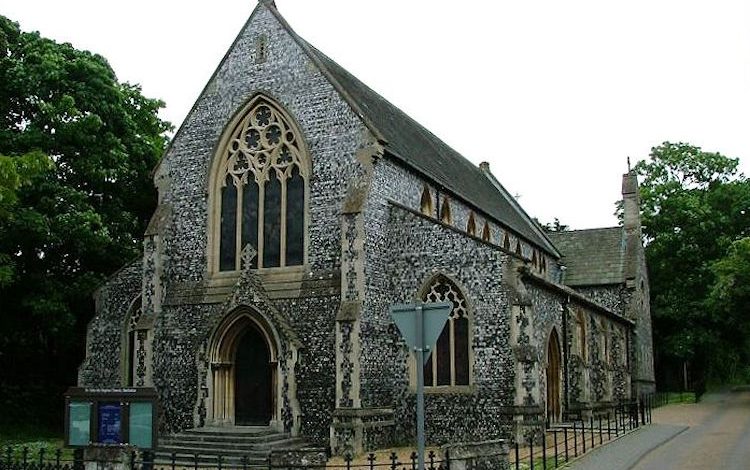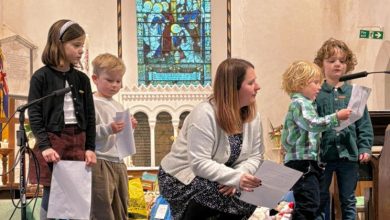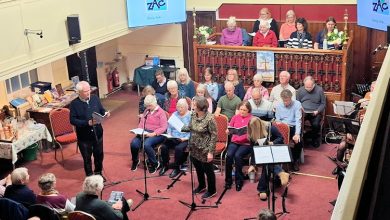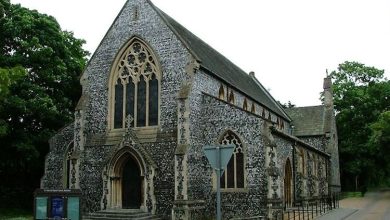Firefighters tackle blaze at South Norfolk church

Historic Church Fire in South Norfolk Market Town
In the quiet market town of Harleston, South Norfolk, an alarming incident unfolded on October 1st as flames engulfed the Victorian church of St John the Baptist. Six fire crews were rapidly dispatched to battle the blaze that threatened this cherished local landmark. The response was comprehensive, with specialized equipment including an aerial ladder platform and a water carrier brought to the scene on Broad Street. Safety measures were swiftly implemented, with authorities establishing a protective cordon around the area to keep onlookers at a safe distance while emergency responders worked tirelessly to control the situation. The smoke billowing from the historic structure created concern for local air quality, prompting Norfolk Fire and Rescue Service to issue a public health advisory for residents and workers in the vicinity to keep their doors and windows closed to avoid potential respiratory issues from smoke inhalation.
The church of St John the Baptist represents more than just a building to the Harleston community—it stands as a testament to Victorian craftsmanship and has been a spiritual home for generations of local families. As one of seven churches comprising the Benefice of Redenhall with Scole, this church has played an integral role in the religious and cultural landscape of the region. The network of churches in this benefice has historically provided spiritual guidance and community gathering spaces across the countryside, with St John the Baptist serving as a particularly notable architectural and historical gem. The sight of smoke rising from its distinctive profile sent shockwaves through the community, with many residents gathering at the perimeter of the safety zone, watching with concern as firefighters worked to save the beloved structure that has stood as a town centerpiece for well over a century.
The response from emergency services showcased the dedication of local firefighters and their strategic approach to tackling fires in historical buildings. Fire crews faced the challenging task of controlling the flames while minimizing damage to the irreplaceable architectural features and historical artifacts housed within the church. The use of an aerial ladder platform highlighted the technical complexity of the operation, allowing firefighters to direct water onto the fire from above while navigating the church’s Victorian design elements including potentially vulnerable roof timbers and stained glass windows. This type of specialized response demonstrates the specific protocols that exist for heritage buildings, which require different firefighting approaches than modern structures due to their construction methods, materials, and historical significance.
Local community members expressed deep emotional connections to the church as news of the fire spread throughout Harleston and neighboring villages. For many residents, St John the Baptist has been the backdrop for significant life events—weddings, christenings, funerals, and holiday celebrations that span generations. One elderly resident who wished to remain anonymous shared memories of attending services there as a child in the 1940s, following in the footsteps of parents and grandparents before them. The potential loss or damage to such a meaningful community landmark resonates far beyond the physical structure itself, touching on collective identity and shared history. Community leaders immediately began discussing support networks for those affected emotionally by the potential loss, recognizing that the impact extends beyond the congregation to touch the broader community who value the church as part of their town’s heritage and skyline.
The church fire also highlights the ongoing challenges faced in preserving historical religious buildings across Britain. Many Victorian churches like St John the Baptist were constructed during a period of ecclesiastical building boom, and now face maintenance challenges due to their age and the specialized skills required for their upkeep. Declining regular attendance at religious services in recent decades has created funding pressures for many parish churches, making it increasingly difficult to maintain these architecturally significant buildings to modern safety standards while preserving their historical integrity. Fire detection and prevention systems in historical buildings present particular challenges, requiring careful integration that doesn’t compromise the character of the structure but provides adequate protection against exactly this kind of disaster. This incident may prompt renewed discussions about heritage preservation funding and the balance between maintaining historical authenticity and implementing modern safety measures.
As the immediate emergency response continues, thoughts are already turning to the recovery phase and what might lie ahead for this cherished landmark. The extent of damage remains to be fully assessed, but experience with similar church fires suggests a long road of restoration may lie ahead. The community will likely rally around efforts to preserve and restore whatever can be saved of the original structure and its contents. Historical churches often contain irreplaceable items of cultural significance—from ancient registers and parish records to artworks, memorials, and architectural features that tell the story of the community across centuries. The coming days will reveal more about what has been lost and what can be recovered, but one thing remains certain: the spirit of community embodied by St John the Baptist Church extends beyond its physical walls. Whatever the outcome of today’s fire, the church’s place in the heart of Harleston and its significance to local identity remains undiminished, with the response to this crisis likely to strengthen community bonds as residents come together to support recovery efforts.








a3mr68